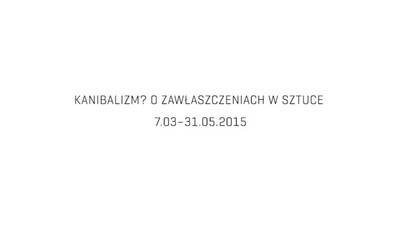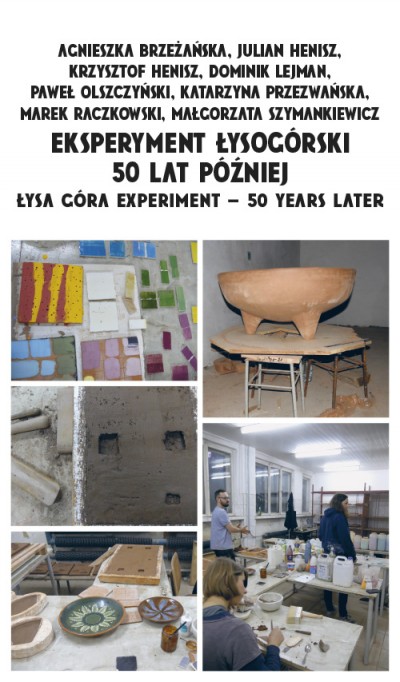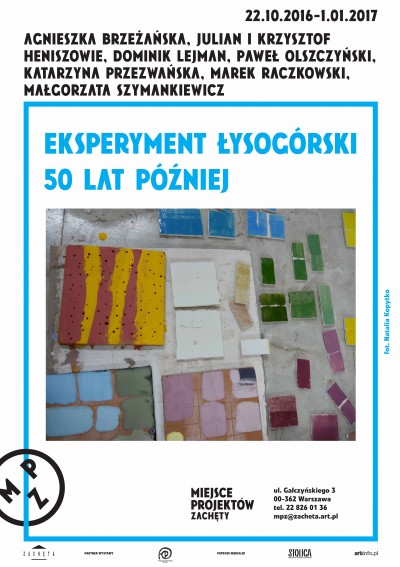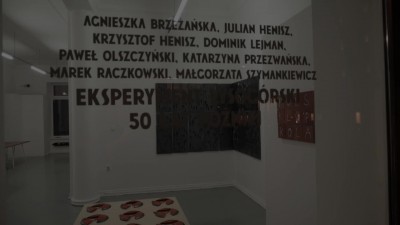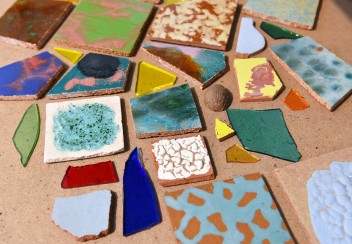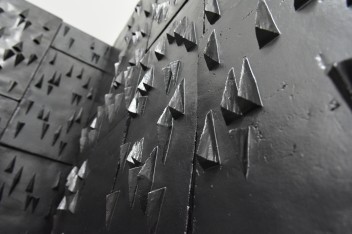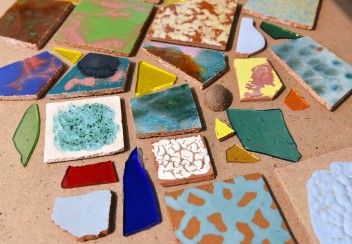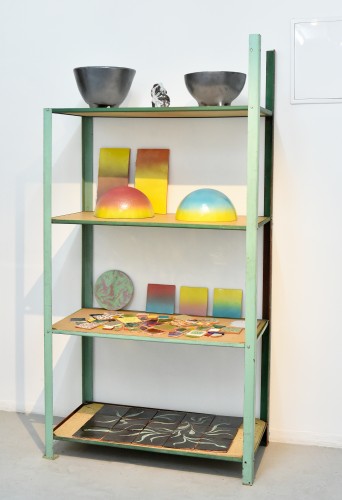Łysa Góra Experiment — 50 Years Later
22.10.2016 – 01.01.2017 Łysa Góra Experiment — 50 Years Later
artists: Agnieszka Brzeżańska, Julian i Krzysztof Henisz, Dominik Lejman, Paweł Olszczyński, Katarzyna Przezwańska, Marek Raczkowski, Małgorzata Szymankiewicz
curators: Anna Wiszniewska, Witold Mierzejewski
collaboration on the part of ZPR: Karolina Bielawska, Julia Harasimowicz
The exhibition revolves around one of the most interesting phenomenons in 20th-century Polish design: so called Łysa Góra experiment (1959–1968). In 1949–1992, the Kamionka Cooperative of Folk and Artistic Industry operated in Łysa Góra, a village located between Tarnów and Kraków. The cooperative specialised in producing folk art-inspired artistic ceramics and cladding tiles. It provided, for example, the tiles that would decorate the walls of various snack bars in Warsaw’s newly erected MDM district (1952). The project was so successful that large-scale production of ceramic cladding materials was launched. In 1959, two Warsaw-based painters, Krzysztof Henisz and Zygmunt Madejski, went to Łysa Góra to meet the ceramist Bolesław Książek and start a collaboration. As a result of their meeting, Kamionka started producing large-format façade cladding tiles, becoming a place where innovative painterly concepts were applied in the field of ceramics, significantly influencing 1960s and 1970s Polish architecture with the introduction of colour to urban spaces on a large scale. The painters’ harmonious collaboration with the Kamionka Cooperative and Bolesław Książek came to an end in 1968. It was decided that the artists would be responsible for the design side only, with the actual production entrusted to workers. This led to a decrease in quality that the artists wouldn’t accept. All that was left of the famous Łysa Góra experiment were enthusiastic press reviews and tile-clad buildings throughout the country. Today, despite protests from art historians and architecture enthusiasts, many of them are dilapidating. In some cases the cladding has been torn off as incompatible with contemporary aesthetics; this has happened, for example, to a perfectly well-preserved tile composition, designed by Krzysztof Henisz and Julian Henisz, that used to decorate the Dom Handlowy Merkury department store in Żoliborz, Warsaw. The gradual disappearance of Łysa Góra architectural ceramics from Polish cityscapes encourages reflection on the legacy of People’s Poland and invites artistic actions and discussions concerning ‘ill born’1 buildings, i.e. those created during the socialist period. The Łysa Góra Experiment — 50 Years Later is an attempt to present and interpret the achievements of the Kamionka Cooperative; the exhibition also seeks to reflect on the contemporary ‘remnants’ of the work of Kamionka and the artists associated with it. The featured artists engage with works from the heyday of the Łysa Góra cooperative, its history and its presentday problems, as the plant, once thriving, is falling into ruin. Małgorzata Szymankiewicz’s installation was inspired by an archival photograph of gloves left to dry on a radiator. In the artist’s interpretation, gloves made of glazed pottery bear witness to the presence of the Cooperative’s former employees, while referencing its specialty, that is hand-decorated ceramics. Marek Raczkowski also alludes to the present-day condition of the Kamionka plant, indebted and neglected as it is. His work is a kind of charade: a combination of ceramic-tile letters forming the inscription ‘Polska / Lokpsa / Kolaps’. Fascinated with architectural ceramics, Paweł Olszczyński created a ‘living ceramic wall’ that embodies the dream of the authors of the ‘experiment’ to effect a synthesis of architecture and the decorative arts. His installation consisting of ‘spiky’ tiles covered with graphite glaze is a homage to Bolesław Książek, a brilliant ceramist and technologist. At the same time, it evidences the painstaking process of seeking the right colour and form for the final version of the work. A monumental ceramic flower pot was made by Katarzyna Przezwańska using an original mould preserved at the defunct plant in Kamionka, recreating one of the characteristic items from its product offer. A ceramic frieze by Agnieszka Brzeżańska also echoes the folk-style decorations typical for Kamionka. The glory days of Łysa Góra, considered a ‘model village’ during the People’s Poland era, are evoked by a projection designed by Dominik Lejman for the façade of the nowdefunct ceramics school there. The project symbolically bridges the past and present of the Łysa Góra ceramic industry: the works presented in the exhibition have been created at the school’s workshop
Łysa Góra Experiment — 50 Years Later
22.10.2016 – 01.01.2017
Zachęta Project Room
ul. Gałczyńskiego 3, 00-362 Warsaw
See on the map
Godziny otwarcia:
tuesday–Sunday 12–8 p.m.
free entry


